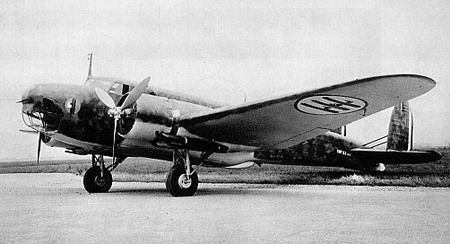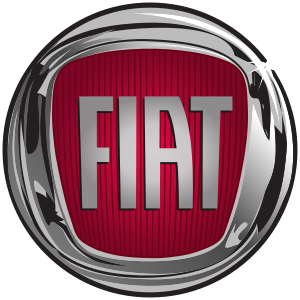History: The Fiat BR.20 Cicogna (Italian: "stork") was a low-wing twin-engine medium bomber that was developed and manufactured by Italian aircraft company Fiat. It holds the distinction of being the first all-metal Italian bomber to enter service; at the time, it was regarded as one of the most modern medium bombers in the world.
The BR.20 has its origins in a request by the Regia Aeronautica (Italian Royal Air Force) issued during 1934 for a new medium bomber capable of high speeds, long range, and satisfactory payload, reliability, and flight characteristics compared to contemporaries. Among the companies that chose to respond was Fiat, which completed its design for the competition during 1935. On 10 February 1936, the first prototype (serial number M.M.274) conducted its maiden flight. Flight testing proceeded at a rapid pace; during September 1936, initial deliveries of the type commenced to the Regia Aeronautica.
During summer 1937, the BR.20 received its baptism of fire when a number were operated by the Aviazione Legionaria during the Spanish Civil War; the BR-20 came to form the backbone of Nationalist bombing operations, along with the German-built Heinkel He 111. It was also used in combat during the 1930s with relative success by the Japanese during the Second Sino-Japanese War. During 1939, a modified long-range BR.20 version (designated BR.20L) named Santo Francesco under the command of Maner Lualdi performed a highly publicised non-stop flight from Rome to Addis Ababa, Ethiopia.
Upon the entry of Italy into the Second World War during mid-1940, the BR.20 served as the standard medium bomber of the Regia Aeronautica, however, by that point, the type was already approaching obsolescence. By 1942, the aircraft was mostly used for maritime patrol and operational training for bomber crews. The BR.20 was produced from the mid-1930s until the end of the Second World War. More than 500 were produced before the end of the war.
The BR.20 has its origins in a request by the Regia Aeronautica (Italian Royal Air Force) issued during 1934 for a new medium bomber capable of high speeds, long range, and satisfactory payload, reliability, and flight characteristics compared to contemporaries. Among the companies that chose to respond was Fiat, which completed its design for the competition during 1935. On 10 February 1936, the first prototype (serial number M.M.274) conducted its maiden flight. Flight testing proceeded at a rapid pace; during September 1936, initial deliveries of the type commenced to the Regia Aeronautica.
During summer 1937, the BR.20 received its baptism of fire when a number were operated by the Aviazione Legionaria during the Spanish Civil War; the BR-20 came to form the backbone of Nationalist bombing operations, along with the German-built Heinkel He 111. It was also used in combat during the 1930s with relative success by the Japanese during the Second Sino-Japanese War. During 1939, a modified long-range BR.20 version (designated BR.20L) named Santo Francesco under the command of Maner Lualdi performed a highly publicised non-stop flight from Rome to Addis Ababa, Ethiopia.
Upon the entry of Italy into the Second World War during mid-1940, the BR.20 served as the standard medium bomber of the Regia Aeronautica, however, by that point, the type was already approaching obsolescence. By 1942, the aircraft was mostly used for maritime patrol and operational training for bomber crews. The BR.20 was produced from the mid-1930s until the end of the Second World War. More than 500 were produced before the end of the war.
Railroad/Company: Fiat Automobiles S.p.A. was an Italian automobile manufacturer, which is now a subsidiary of FCA Italy S.p.A., which is part of Fiat Chrysler Automobiles (previously Fiat S.p.A.). Fiat Automobiles was formed in January 2007 when Fiat reorganized its automobile business, and traces its history back to 1899 when the first Fiat automobile, the Fiat 4 HP, was produced.
Fiat Automobiles is the largest automobile manufacturer in Italy. During its more than century-long history, it remained the largest automobile manufacturer in Europe and the third in the world after General Motors and Ford for over twenty years, until the car industry crisis in the late 1980s. In 2013, Fiat S.p.A. was the second largest European automaker by volumes produced and the seventh in the world, while currently FCA is the world's eighth largest auto maker.
In 1970, Fiat Automobiles employed more than 100,000 in Italy when its production reached the highest number, 1.4 million cars, in that country. As of 2002, it built more than 1 million vehicles at six plants in Italy and the country accounted for more than a third of the company's revenue. Fiat has also manufactured railway engines, military vehicles, farm tractors, aircraft, and weapons such as the Fiat–Revelli Modello 1914.
Fiat-brand cars are built in several locations around the world. Outside Italy, the largest country of production is Brazil, where the Fiat brand is the market leader. The group also has factories in Argentina, Poland and Mexico (where Fiat-brand vehicles are manufactured at plants owned and operated by FCA US for export to the United States, Brazil, Italy and other markets) and a long history of licensing manufacture of its products in other countries.
Fiat Automobiles is the largest automobile manufacturer in Italy. During its more than century-long history, it remained the largest automobile manufacturer in Europe and the third in the world after General Motors and Ford for over twenty years, until the car industry crisis in the late 1980s. In 2013, Fiat S.p.A. was the second largest European automaker by volumes produced and the seventh in the world, while currently FCA is the world's eighth largest auto maker.
In 1970, Fiat Automobiles employed more than 100,000 in Italy when its production reached the highest number, 1.4 million cars, in that country. As of 2002, it built more than 1 million vehicles at six plants in Italy and the country accounted for more than a third of the company's revenue. Fiat has also manufactured railway engines, military vehicles, farm tractors, aircraft, and weapons such as the Fiat–Revelli Modello 1914.
Fiat-brand cars are built in several locations around the world. Outside Italy, the largest country of production is Brazil, where the Fiat brand is the market leader. The group also has factories in Argentina, Poland and Mexico (where Fiat-brand vehicles are manufactured at plants owned and operated by FCA US for export to the United States, Brazil, Italy and other markets) and a long history of licensing manufacture of its products in other countries.
Item Links: We found: 1 different collections associated with Aircraft - Propeller - BR.20 Cicogna
- Collection War at Sea: 1 different items.








